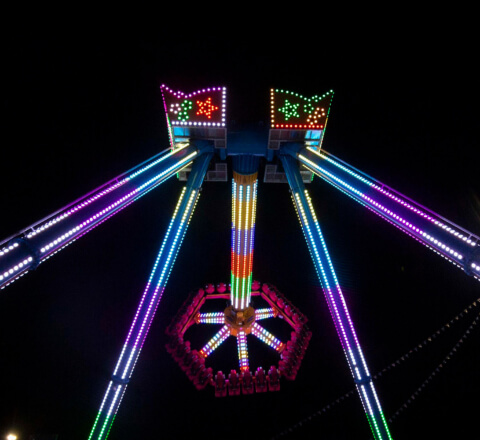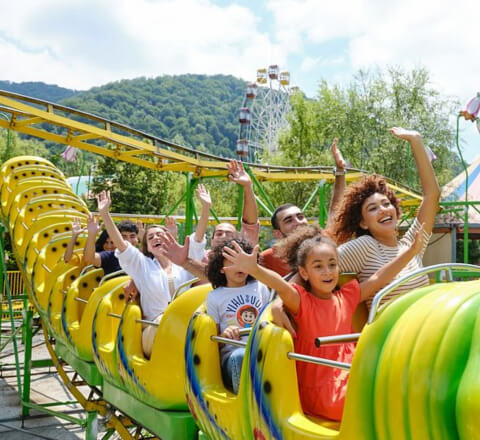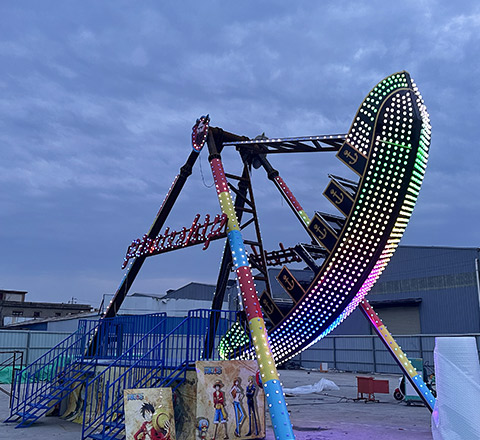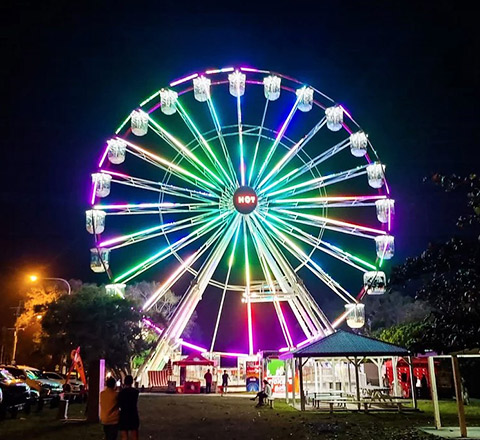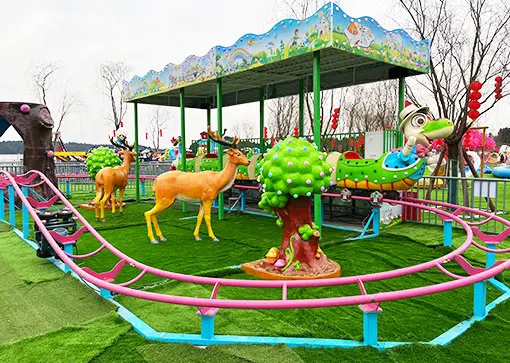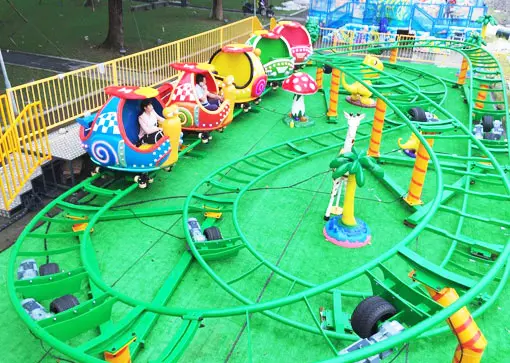Most people imagine roller coasters as towering rides inside theme parks.
But today, families are discovering the thrill of a backyard roller coaster—a smaller, safer, and more practical version that brings excitement right into your garden.
This comprehensive FAQ guide answers every question you may have about backyard roller coaster kits, DIY builds, safety, costs, and family options, so you can decide what’s best for your space.
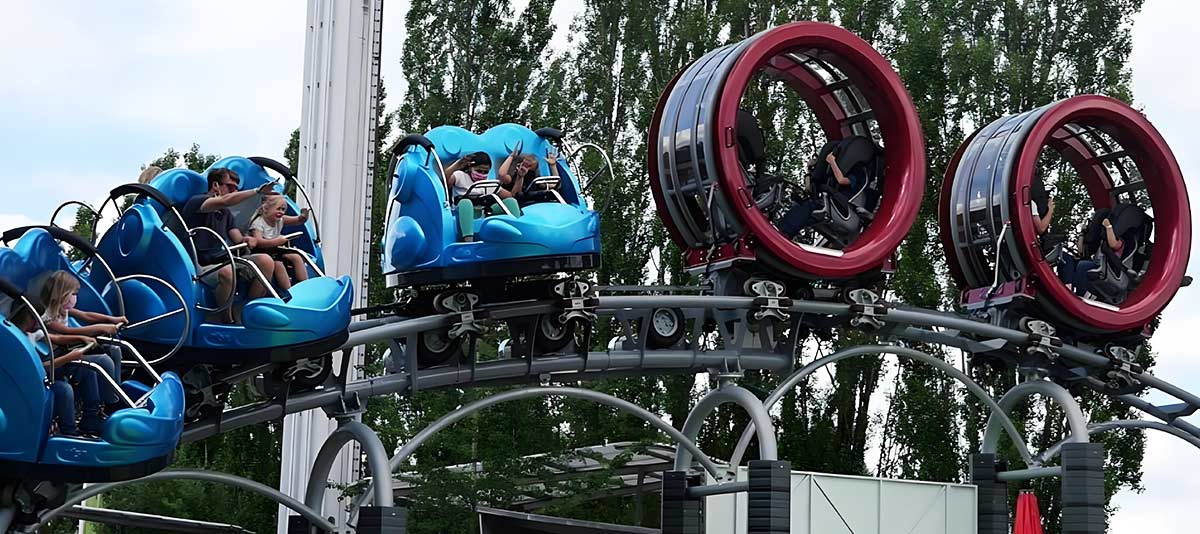
1) What’s a backyard roller coaster, and how is it different from a theme-park ride?
A backyard roller coaster is a scaled, engineered amusement ride designed for private gardens. Unlike theme park coasters that stretch kilometers long, backyard coasters are compact and family-focused.
They use real mechanics—track, supports, cars, wheels, and restraints—but with shorter track lengths, lower speeds, and easier installation. The goal is to give you the thrill of a coaster while keeping it safe and manageable for a home setting.
👉 Curious about different themes of backyard roller coaster rides? Visit our Se vende montaña rusa de jardín page to see what’s available.
2) What are the types of backyard roller coasters?
When exploring tipos de montañas rusas, you’ll find several categories to choose from. Kids may enjoy mini versions designed for gentle fun, while larger families may prefer bigger coasters with higher capacity. Enthusiasts with large sloped gardens often choose terrain or shuttle-style builds.
Common types include:
- Backyard roller coaster for kids (mini rides)
- Family-size backyard roller coasters
- Backyard roller coaster DIY projects
- Backyard roller coaster kits for quick installation
- Custom wooden or steel terrain coasters
- Launch and shuttle coasters for thrill seekers
👉 For theme ideas and customization, explore Roller Coaster Themes ideas.
3) How to make a roller coaster at home easy?
Many people ask: “How to make a roller coaster at home easily?”
The truth is, while building a coaster is not “easy,” it’s possible with careful planning. DIY enthusiasts often use wood, steel, or PVC, but safety is the biggest challenge.
To keep it practical, start small—build a simple sled or slide track to test your ideas. Study coaster geometry, test loads gradually, and always use restraints. If engineering and welding are outside your comfort zone, a backyard roller coaster kit is the safer, faster choice.
👉 To understand how roller coasters operate safely, read How a Roller Coaster Works: Simple, Safe, and Smarter Than You Think.
4) How much space do I need for a backyard roller coaster?
The footprint depends on the type of coaster you choose. Mini coasters for kids can fit into smaller backyards, while family-sized rides need more room. Terrain coasters are custom-designed to follow your slope and garden shape.
- Kids’ roller coasters: 50–100 m²
- Family roller coasters: 150–300 m²
- Custom terrain or shuttle coasters: tailored to your land
Always leave clearance for fences, trees, and overhead lines, and plan pathways for maintenance and safety.
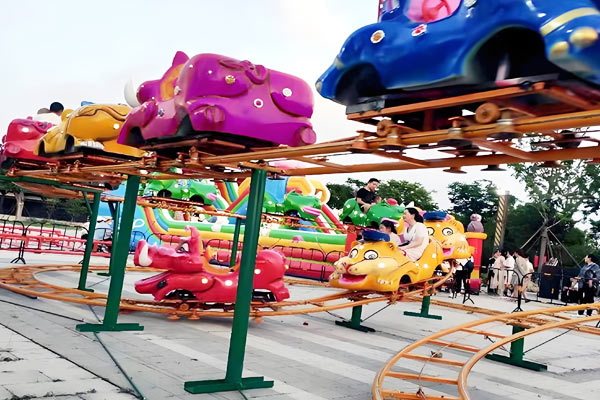
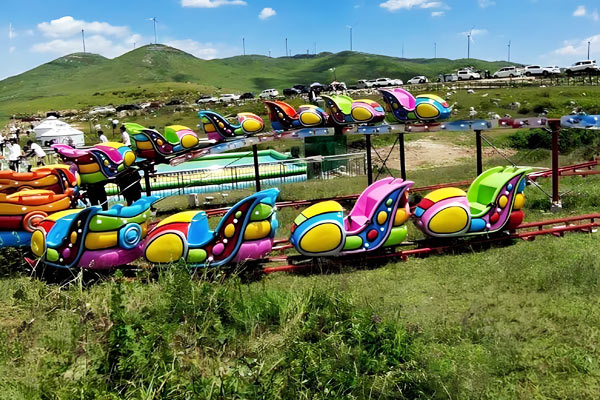
5) How much does it cost to build your own backyard roller coaster?
When people search “how much does it cost to build your own backyard roller coaster”, they discover that costs vary widely. DIY projects may cost a few hundred to a few thousand dollars, depending on materials.
Backyard roller coaster kits for kids typically range between $3,000–$10,000, while family-size steel or FRP coasters often cost $20,000–$50,000+. Custom terrain, wooden, or launch coasters with tunnels and splash effects can cost significantly more.
Cost is influenced by track length, materials, theming, site prep, and installation.
6) How long does installation take—DIY vs professional?
The installation timeline depends on whether you build it yourself or buy a kit.
DIY projects often stretch into weeks or months due to design, sourcing, and testing. In contrast, professional kits can be installed in 3–10 days, while larger custom rides take about 2–4 weeks including foundations and site preparation.
7) What safety features and certifications matter most?
Safety is the cornerstone of any coaster—especially one built in your backyard. Certified manufacturers ensure compliance with international standards like CE and ISO.
Look for:
- CE/ISO certificaciones
- Load testing reports
- Lap bars or seat belts
- Reliable braking systems
- Anti-corrosion coatings
- Operation and maintenance manuals
8) Do I need permits or zoning approval?
Yes, in most areas you’ll need approval before installing a backyard roller coaster. Building permits and zoning rules vary by region, but skipping this step can lead to fines or removal orders. Always check with your local council before starting.
9) What materials are best for tracks and supports?
Material choice affects durability, cost, and aesthetics.
- Steel: Strong, long-lasting, smoother rides.
- Wood: Rustic and classic, but requires higher maintenance.
- FRP (Fiberglass-reinforced plastic): Lightweight, weather-resistant.
- PVC: Useful for DIY experiments, but not suitable for permanent builds.
👉 Want more ideas? Visit Roller Coaster Themes for Thrill Seekers (With Custom Options).


10) Can adults ride backyard roller coasters?
Yes. Backyard roller coasters for adults are designed with higher weight and size limits. Kids-only versions usually cap at ~60 kg, but family coasters can safely handle adults. Always confirm manufacturer specifications before buying.
11) What maintenance is required after installation?
An amusement park ride maintenance plan keeps your ride safe and long-lasting.
- Daily: Check restraints and clear track debris.
- Weekly: Inspect bolts, wheels, and welds.
- Monthly: Test brakes and restraints.
- Annually: Apply anti-rust coatings and perform a full inspection.
Manufacturers like CARNEE Rides provide manuals, spare parts, and service support.
👉 More Roller Coaster Daily Maintenance Checklists?- Guía de mantenimiento de montañas rusas: Safety, Costs & Expert Tips
12) Do I need a powered lift, or can it be gravity-only?
Both options exist. Gravity-only coasters are simpler, using natural slopes to generate speed. Powered lifts or launch systems are necessary for higher, longer, or more thrilling rides. The choice depends on your space, thrill goals, and budget.
13) Where can I buy a backyard roller coaster or kit?
Options include:
- Certified manufacturers (Paseos en CARNEE, Sinorides)
- Backyard roller coaster kit suppliers (Magictecture)
- Marketplaces (Alibaba, Amazon—always verify certifications)
Always compare specs, warranty, and after-sales support before investing.
Extended Backyard Roller Coaster FAQs
- Wood vs Steel: Wooden coasters feel classic but need more upkeep; steel is smoother and more durable.
- Noise: Modern coasters are quieter than lawnmowers.
- Lifespan: Steel/FRP lasts 15–20 years; wood needs heavy maintenance after 3–5 years.
- Accidents: Extremely rare on certified builds; most risks come from untested DIY projects.
- Backyard roller coaster DIY dream builds: Some enthusiasts design wooden terrain coasters with tunnels, overbanked turns, and splash pools—ambitious, but possible with professional help.
Final Thoughts
A backyard roller coaster isn’t a toy—it’s a popular amusement ride. (Learn More: 25 Classic Carnival Rides)
It can strengthen family bonds, provide safe thrills, and transform your garden into a private amusement park.
Whether you choose a Backyard roller coaster kit, invest in a family roller coaster, or experiment with a Backyard roller coaster DIY project, safety and planning are non-negotiable.
En CARNEE – a trusted backyard roller coaster manufacturer, we’ve built rides for over 120 countries, combining engineering expertise, certifications, and creative design. We help families and enthusiasts make their dream rides a reality.
Backyard roller coaster—your garden, your amusement park.

